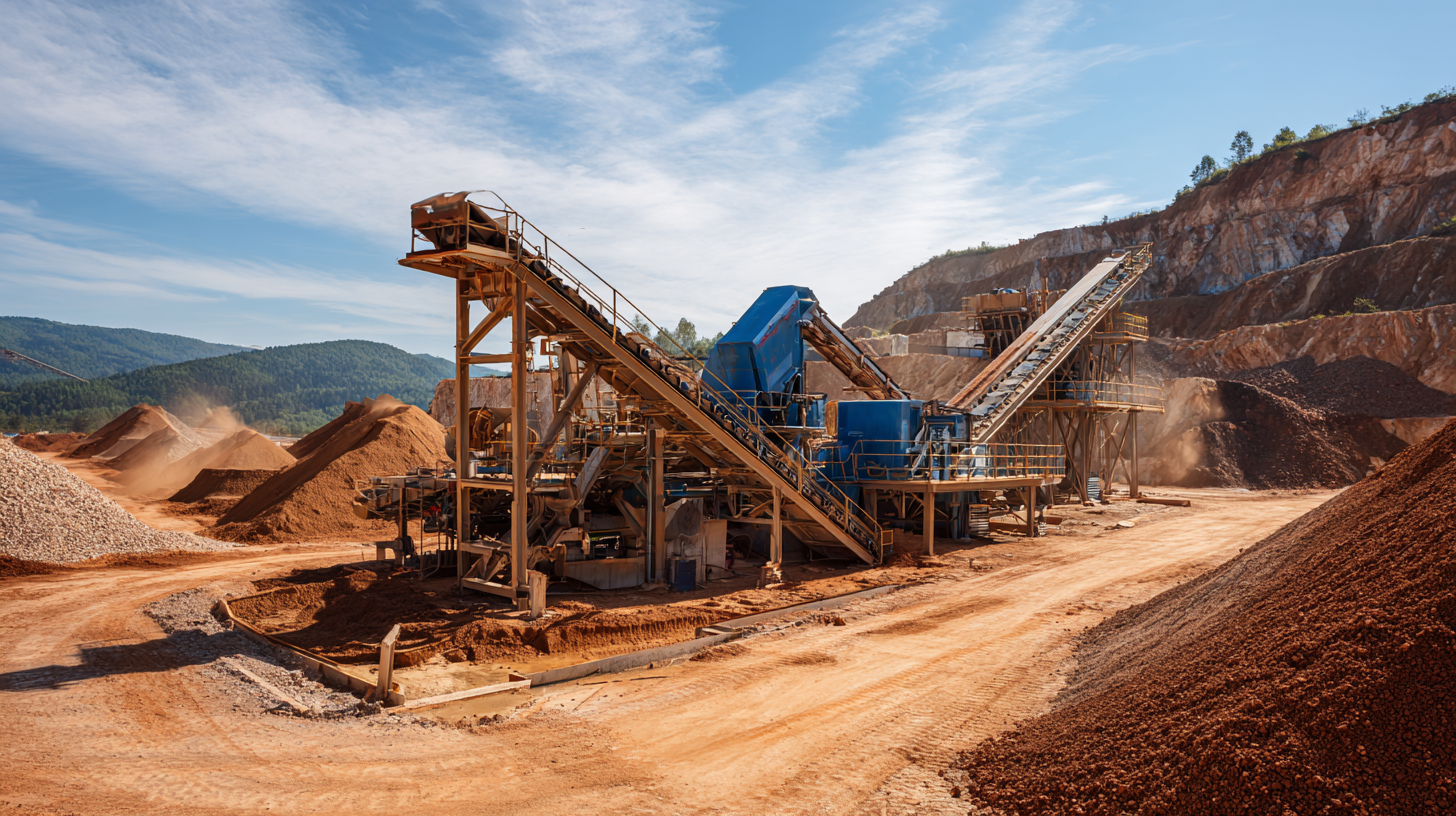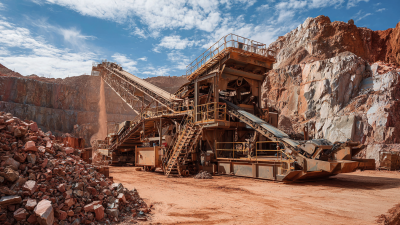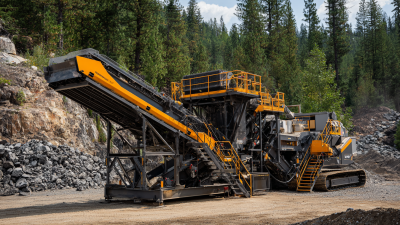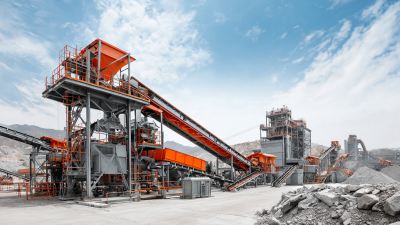In the competitive landscape of the mining and construction industry, optimizing the efficiency of Quarry Crusher operations is paramount for achieving maximum output. As the backbone of material extraction and processing, Quarry Crushers play a crucial role in determining productivity and profitability. This article delves into the essential strategies and best practices that can unlock the full potential of Quarry Crusher systems. By exploring innovative techniques, advanced technologies, and maintenance protocols, we aim to provide insightful guidance that empowers operators to enhance operational performance. Understanding the intricacies of Quarry Crusher operations not only leads to increased output but also ensures a more sustainable approach to resource management in the ever-evolving sector.

In the world of quarrying, understanding the different types of crushers is essential for optimizing operations and achieving maximum output. The primary types of quarry crushers include jaw crushers, cone crushers, impact crushers, and mobile crushers, each serving a unique function in the crushing process. Jaw crushers are known for their ability to handle large material sizes and provide a primary crushing solution. They operate on a simple principle of compressive force, allowing them to reduce a variety of materials efficiently.
Cone crushers, on the other hand, are ideal for secondary and tertiary crushing, offering a more refined output. Their design allows for greater material shape consistency and is particularly effective for hard and abrasive materials. Impact crushers are favored for their ability to produce high-quality aggregates with a cubical shape and are particularly useful in applications requiring a finer end product. Lastly, mobile crushers offer flexibility in operations, allowing for on-site processing and reducing transport costs, making them a valuable asset for dynamic quarry environments. Understanding these different types and their specific functions can greatly enhance operational efficiency and output in quarrying activities.
This chart illustrates the efficiency and output of different types of quarry crushers, showcasing how each type contributes to overall productivity in quarry operations.
Efficient quarry crusher operations hinge on several key factors that significantly influence both efficiency and output levels. One of the most pivotal aspects is the selection of the right type of crusher for the specific application. According to a report by the National Stone, Sand & Gravel Association (NSSGA), the correct choice can enhance productivity by as much as 20%, especially when considering the material's characteristics such as size, hardness, and abrasiveness. Understanding these parameters allows operators to optimize their equipment for maximum performance.

Furthermore, maintaining the crusher's operational integrity is another crucial factor. Regular maintenance and timely replacement of wear parts can reduce downtime significantly, with studies indicating that effective maintenance schedules can boost output by up to 30% over time. Additionally, operational factors such as feed size and material consistency also play critical roles; the Cleveland Research Group notes that maintaining an optimal feed size reduces the likelihood of blockages and ensures a smoother flow through the crushing process. By addressing these key elements, quarry operations can unlock the full potential of their crusher systems, leading to enhanced productivity and efficiency.
Efficient operation and maintenance of quarry crushers are crucial for maximizing output and ensuring longevity. One of the best practices involves implementing a regular maintenance schedule that includes thorough inspections of all mechanical components. This proactive approach helps identify potential issues before they escalate, thereby minimizing downtime and maintaining optimal performance. Key areas to inspect include the crusher's wear parts, hydraulic systems, and electrical components, ensuring they operate at peak efficiency.
Another important aspect is the training of personnel. Staff should be well-versed in operating the crushers and aware of the standard operating procedures. This not only enhances safety but also ensures that the equipment is used correctly, which directly impacts productivity. Additionally, employing modern technology, such as remote monitoring systems, can provide real-time data on the crusher's performance, allowing for timely adjustments that can lead to significant gains in output. By focusing on maintenance and personnel training, quarry operations can achieve greater efficiency and reliability in their crushing processes.
| Aspect | Best Practices | Frequency | Expected Outcome |
|---|---|---|---|
| Daily Inspections | Check for wear, leaks, and abnormal noises | Daily | Early detection of issues |
| Lubrication | Apply grease to moving parts as recommended | Weekly | Reduced wear and longer lifespan |
| Screen Maintenance | Inspect and clean screens regularly | Every month | Improved material flow |
| Hydraulic System Checks | Monitor fluid levels and filter conditions | Every quarter | Optimal performance and efficiency |
| Operator Training | Regular training on equipment use and safety | Annually | Reduced accidents and enhanced productivity |
Innovative technologies are transforming the operations of quarry crushers, significantly enhancing their performance and efficiency. By integrating advanced automation systems, quarry operators can monitor and control their equipment in real time, leading to enhanced precision in material processing. For instance, the implementation of IoT sensors allows for continuous tracking of machine health and output levels, enabling predictive maintenance that minimizes downtime and extends the lifespan of the crushers. This technological shift ensures that operations run smoothly and that potential issues are addressed before they escalate.

Moreover, the advent of artificial intelligence and machine learning algorithms in crusher operations is paving the way for optimization. These technologies analyze vast amounts of data to determine the most effective crushing parameters, adapting to different materials and conditions dynamically. This results in improved throughput and reduced energy consumption, providing both economic and environmental benefits. As the quarrying industry continues to evolve, the adoption of these innovative technologies is essential for maximizing output and staying competitive in a rapidly changing market.
Efficient quarry crusher operations are crucial for maximizing output and ensuring profitability in the mining sector. Several case studies highlight how innovative techniques and strategies can lead to significant improvements. For example, a limestone quarry in the Midwest implemented a new automated control system that reduced downtime and increased production rates by over 20%. By analyzing operational data, the management team was able to fine-tune their crusher settings in real-time, ensuring optimal performance at all times.
Tips: Regular maintenance checks can prevent minor issues from escalating into major downtimes. Incorporating predictive maintenance tools is another effective way to monitor equipment health. Setting performance benchmarks based on successful case studies can also guide operational improvements and inspire teams to strive for excellence.
Another striking example comes from a granite quarry in Canada, which revamped its crushing processes to incorporate mobile crushing technology. This shift not only improved site access but also reduced transportation costs significantly. By leveraging advanced materials handling techniques, they managed to streamline operations, resulting in a remarkable increase in material output while maintaining high-quality standards.
Tips: Invest in employee training to ensure staff are well-versed in new technologies and best practices. Establishing a culture of continuous improvement can empower teams to test new methods and share insights, ultimately driving productivity.






